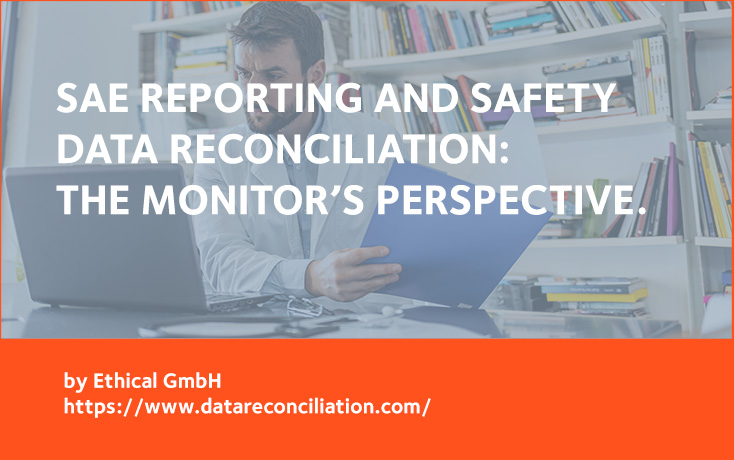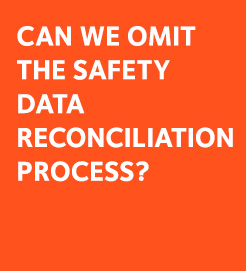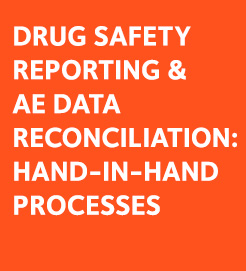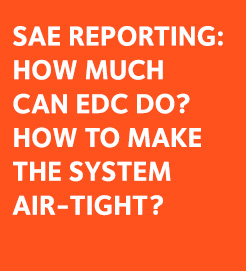In recent years, SAE Reporting and SAE data reconciliation has become a routine operation in the majority of clinical trial sponsor companies. During this exercise, many data points are found to be identical between the clinical and the safety databases and some need to be clarified and corrected. When discrepancies are found, queries are sent to the site and the monitor is instructed to seek the correct information and ensure it is conveyed via the SAE reporting system. During this process, even obvious corrections must be thoroughly documented and this adds an additional complexity to the monitoring operations. Early and detailed explanation of the process to all stakeholders is the best way to avoid confusion and frustration.
Most companies sponsoring clinical trials have two distinct SAE reporting systems, one being part of the clinical data collection system (eCRF or paper CRF) and the other attached to the safety monitoring system for SAE reporting. This duality creates the need for SAE data reconciliation prior or in parallel to SAE reporting to ensure that the two databases agree with one another. Some companies use computer systems specially created for this purpose while others operate in a manual way with ledgers and spreadsheets. The comparison and definition of data to be verified and corrected is generally initiated by the central clinical team located at the company headquarters. During the SAE data comparison and reconciliation, queries are issued which the local monitors must follow up and resolve with the investigational site.
In a clinical trial, the initial data entry into the CRF triggers a series of queries, due to either automatic edit checks or manual review of the data. These queries are followed until resolution by the local monitors. However, the SAE reconciliation process is likely to issue a second wave of queries for data that may appear to have already been checked and corrected. Sometimes, when this second series of queries arrive, the patient case report book may be considered finalized at the CRF level and may have been signed off by the investigator. All the data may seem correct and consistent. However, new queries are now received because of discrepancies with data points recorded in the safety SAE reporting system. Often these queries simply ask to confirm obvious information and if there are several, this can be confusing and frustrating for the site personnel.
According to the clinicaltrials.gov database of privately and publicly funded clinical studies, there are currently 388,133 active research studies ongoing in 220 countries. Of these, 145,000 are conducted in the United States and 111,000 in the European Union. Many of these studies are simultaneously conducted in more than one region and country. They are therefore monitored by personnel reporting to various structures such as local sponsor affiliates, global or local CROs or a mix of these. These local monitors must be trained to understand the reconciliation process and the rationale for these additional queries. They need to be able to explain the reasons and guide the site personnel in reviewing the source data and updating SAE reporting information. Sponsors should organize training sessions on the SAE reconciliation process at the beginning of the trial to present the expected volume and nature of data that are likely to be queried to all monitors. They should also include the topic in the study initiation visit (SIV) and investigator’s meeting (IM) presentations so that site personnel, including the principal investigator, are aware of the process and anticipate any associated workload.
The dual process of SAE recording in two different SAE reporting systems is likely to continue for the foreseeable future and therefore there will continue to be a need for SAE data reconciliation requiring a new set of verifications and corrections. As a consequence, the SAE reconciliation process will continue to generate additional workload for field-based monitors and site personnel. The required actions may seem redundant to both monitors and site personnel and therefore the rationale for this process needs to be explained early on in the course of the study. Integrating the process description and training to the main trial conduct is the best way to keep all stakeholders aware and avoid questions and frustration.
DOWNLOAD NOW THE FREE SAE RECONCILIATION HANDBOOK
The Manual / Reference Book with all the topics related to the Safety Data Reconciliation Management.







